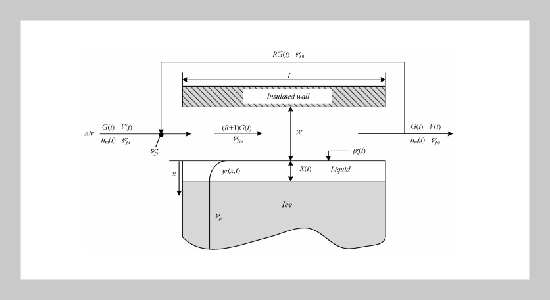Chii-Dong Ho This email address is being protected from spambots. You need JavaScript enabled to view it.1, Ho-Ming Yeh1, Jr-Wei Tu1 and Ying-Sian Su1 1Department of Chemical and Materials Engineering, Tamkang University Tamsui, Taiwan 251, R.O.C.
Received:
March 4, 2005
Accepted:
April 27, 2005
Publication Date:
December 1, 2005
Download Citation:
||https://doi.org/10.6180/jase.2005.8.4.05
A mathematical model of cool-thermal discharge systems with external recycle by melting ice with producing chilled air to supply on-peak daytime air-conditioning needs was developed and studied analytically. The estimation of the outlet chilled air temperature and air mass velocity with convective transfer on free water surface under air time-velocity variations for specified inlet temperatures was illustrated. Theoretical results show that the recycle effect can effectively enhance the heat transfer efficiency compared with that in the device without recycle. Three numerical examples of ambient air temperatures varied with time in practical systems were simulated, and the result of air mass velocity with air traversed length as a parameter was also delineated.ABSTRACT
Keywords:
Heat Transfer, Cool Thermal Discharge, Chilled Air, External Recycles
REFERENCES
















